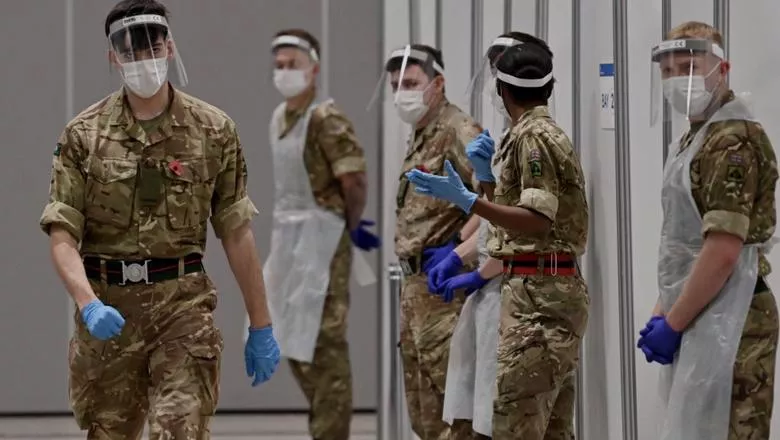This analysis highlights the neglect of security architecture of nations to assess and mitigate damage from biological threats, as well as the importance for deeper collaboration and information-sharing between civilian and security organisations.
Martin Bricknell
03 June 2021
New analyses shows COVID-19 pandemic could exacerbate existing conflicts and trigger new flashpoints
New analyses highlights how pressures of COVID-19 could lead to conflict post-pandemic.

Increased conflict could arise across the globe following the political, economic, military and social impact of COVID-19. In new analyses, researchers argue the pandemic has created instability in the international system.
The pressures placed on militaries to mobilise around the world to support the COVID response has affected routine training and driven a divide between countries and organisations. The research, drawn from a series of papers produced by the School of Security Studies, indicates that some states are using the disruption to advance their national interests and create further instability.
Beyond the short-term effects, secondary impacts of COVID-19 are likely to include threats to social cohesion, reduction of economic activity and shrinking of national defence budgets.
The project, led by Martin Bricknell, Professor of Conflict, Health and Military Medicine, is the first structured analysis and comparison of the impact of the COVID-19 pandemic on armed forces between states. It recommends a need for more research to inform lessons to be learned from the COVID crisis, as well as the greater role military medical services should play in countries, in both supporting military operations and also contributing to national crisis response in health emergencies.
The new analyses are drawn from a series of research papers, commissioned by NATO, the European Parliament and funded and carried out by the School of Security Studies. They represent an in-depth and extensive comparison between countries of the impact of COVID-19 on armed forces personnel, military operations, and the contribution of national armed forces to national response to the COVID-19 crisis.
The research includes case study analysis of 11 key European and non-European states (including China, Russia, USA, Belgium, UK and Italy), and examination of UN, NATO and EU policies.
The research programme has also developed a framework for comparison across states, allowing similarities and differences between military support activities to be identified.
Read the full report, published by NATO Allied Command Transformation Open Perspectives Exchange Network (OPEN), online and an article further exploring this research on the Defence-In-Depth blog.
Despite the 2013 NATO Strategic Foresight Analysis report recognising that competition for medical resources, vaccines and uncontrolled migration could produce instability in a pandemic, there has been little investigation into the integration of civil-military responses to global health threats, compared to other national security threats such as state conflict or terrorism.
Martin Bricknell
Publications from the full research programme:
- Civil–military cooperation in the early response to the COVID-19 pandemic in six European countries– published by British Medical Journal (BMJ) Military Health
- How the COVID-19 crisis has affected security and defence-related aspects for the EU: Part I – Briefing– published by the European Parliament’s subcommittee on Security and Defence
- How the COVID-19 crisis has affected security and defence-related aspects of the EU: Part II - In Depth Analysis– published by the European Parliament’s subcommittee on Security and Defence

